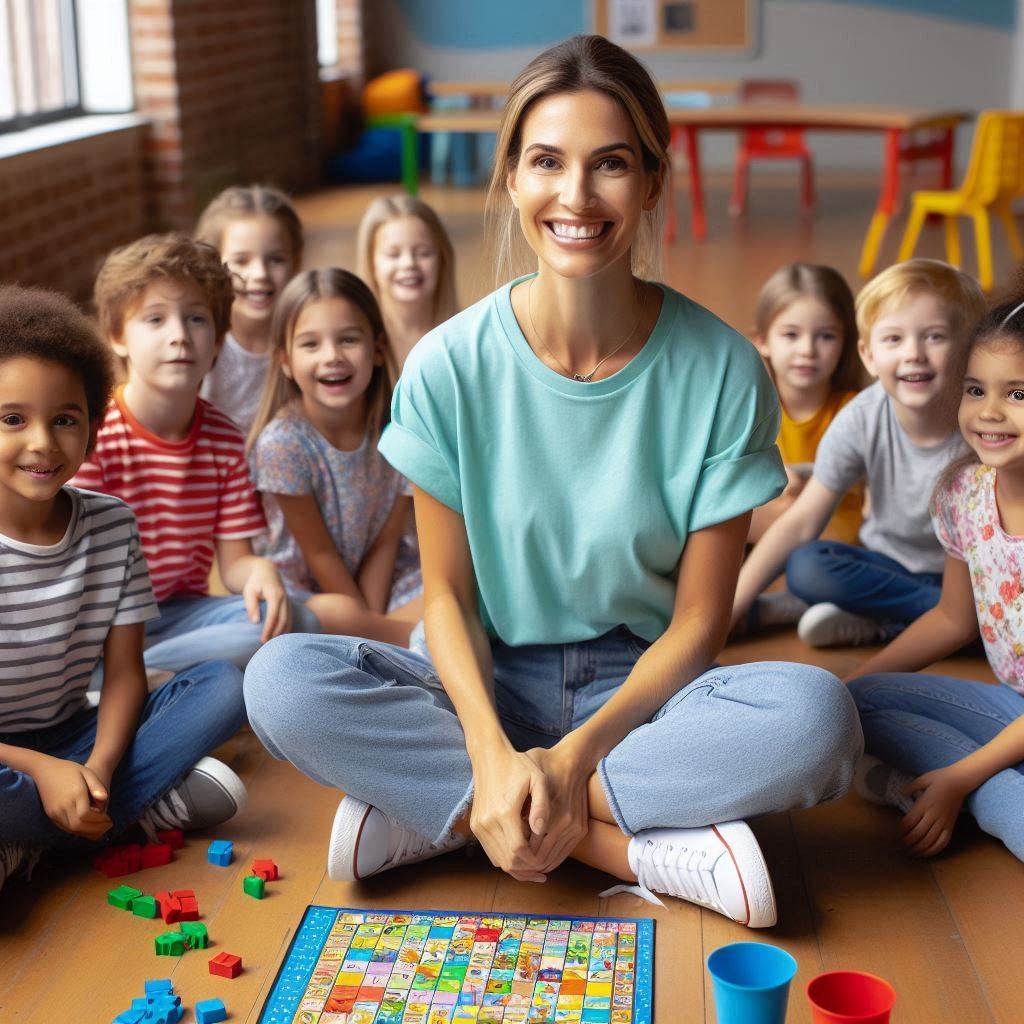Introduction
Recreational therapy, a structured intervention, utilizes activities to improve physical, emotional, and social well-being. It aims to enhance the quality of life for individuals with disabilities or illnesses.
In schools, this therapy plays a crucial role in fostering holistic development among students.
Definition of Recreational Therapy
Recreational therapy, often termed therapeutic recreation, employs various activities such as arts, sports, and games to achieve specific therapeutic goals.
These activities are carefully chosen and adapted to meet the needs and abilities of each student, promoting engagement and enjoyment.
Importance of Recreational Therapy in Schools and Education
In educational settings, recreational therapy serves as a complementary approach to traditional academic learning.
It addresses diverse needs beyond cognitive development, including physical rehabilitation, emotional regulation, and social skills enhancement.
By incorporating structured recreational activities into the curriculum, schools support students’ overall well-being.
Overview of How Recreational Therapy Can Benefit Students
Firstly, physical benefits are evident as recreational activities promote motor skills, coordination, and physical fitness.
Through activities like swimming or adaptive sports, students with physical disabilities can improve their strength and mobility.
Secondly, recreational therapy contributes significantly to emotional well-being. Activities such as art therapy or mindfulness exercises help students express emotions, reduce stress, and develop coping strategies.
This emotional resilience fosters a positive attitude towards learning and enhances self-esteem.
Moreover, recreational therapy fosters social skills and peer relationships.
Group activities encourage teamwork, communication, and cooperation among students. These interactions are crucial for building friendships and developing social confidence.
Furthermore, the therapy supports academic success by improving attention spans and reducing behavioral issues.
Engaging in recreational activities enhances students’ focus and concentration, leading to better academic performance.
Additionally, recreational therapy promotes inclusivity and equity in education. It ensures that students of all abilities have access to meaningful learning experiences.
By adapting activities to individual needs, schools create an inclusive environment where every student can participate and thrive.
Basically, recreational therapy in schools is not merely about leisure activities but a deliberate strategy to promote holistic development.
It addresses physical, emotional, and social aspects of students’ well-being, enriching their educational journey.
By integrating recreational therapy into education, schools empower students to achieve their full potential, both inside and outside the classroom.
Final Thoughts
As schools continue to recognize the importance of holistic development, integrating recreational therapy becomes increasingly vital.
It complements academic learning by nurturing students’ physical health, emotional resilience, and social skills.
By investing in recreational therapy, schools invest in the comprehensive well-being and future success of their students.
The role of recreational therapy in promoting physical health
Recreational therapy plays a crucial role in school settings, particularly in enhancing physical health among students.
By integrating structured physical activities and exercises into the curriculum, schools not only promote fitness but also cultivate healthy habits and improve essential motor skills and coordination in students.
Engaging Students in Physical Activities and Exercises
Incorporating recreational therapy involves organizing diverse physical activities that cater to students’ interests and abilities. These activities range from team sports like soccer and basketball to individual exercises such as yoga and dance.
By actively participating in these activities, students not only improve their physical health but also experience the benefits of regular exercise, including enhanced cardiovascular fitness and increased flexibility.
Engagement in physical activities fosters a sense of teamwork and camaraderie among students. It encourages them to collaborate, communicate, and strategize effectively, which are essential skills both in academics and in life.
Moreover, these activities provide a constructive outlet for students to release energy and manage stress, contributing to their overall well-being.
Promoting Healthy Habits and Lifestyles
Through recreational therapy, schools promote the adoption of healthy habits and lifestyles from a young age.
By embedding physical activities into the daily routine, educators instill the importance of regular exercise as a fundamental aspect of a healthy lifestyle.
This proactive approach not only helps in preventing obesity and related health issues but also establishes a lifelong commitment to fitness and well-being.
In addition to physical benefits, participating in recreational activities promotes mental health by reducing anxiety and depression levels among students.
It fosters a positive mindset and improves self-esteem as students achieve physical milestones and personal goals through consistent effort and practice.
Helping Students Improve Motor Skills and Coordination
Recreational therapy focuses on enhancing students’ motor skills and coordination through targeted exercises and activities. These activities are designed to improve balance, agility, and spatial awareness, crucial for both sports and everyday tasks.
By practicing these skills in a structured and supportive environment, students develop confidence in their physical abilities and are more likely to engage in physical activities outside of school.
Furthermore, improving motor skills and coordination positively impacts academic performance.
Research indicates that physical activity enhances cognitive function, including concentration and memory retention, leading to improved academic outcomes.
Thus, by investing in recreational therapy, schools not only prioritize physical health but also support holistic development, preparing students for academic success and lifelong wellness.
Generally, recreational therapy in schools significantly contributes to promoting physical health by engaging students in diverse physical activities, promoting healthy habits, and enhancing motor skills and coordination.
By incorporating these strategies into the educational framework, schools foster a supportive environment where students can thrive physically, mentally, and academically.
As educators continue to prioritize holistic development, the role of recreational therapy remains integral in shaping healthier and more resilient generations.
Read: Licensing and Certification for Genetic Counselors
The Impact of Recreational Therapy on Mental Health
Recreational therapy in schools plays a pivotal role in enhancing mental health by offering constructive outlets for stress and anxiety.
Through structured activities like sports, art, and outdoor adventures, students channel pent-up emotions into positive energy.
These experiences not only distract from academic pressures but also teach coping mechanisms that are vital for managing stress in everyday life.
Transform Your Career Today
Unlock a personalized career strategy that drives real results. Get tailored advice and a roadmap designed just for you.
Start NowParticipation in recreational therapy has been shown to significantly boost self-esteem and confidence among students.
By accomplishing physical and mental challenges in a supportive environment, individuals develop a sense of achievement.
Success in recreational activities translates into a newfound belief in their abilities, fostering a positive self-image that extends beyond recreational sessions into academic and social settings.
Moreover, these therapy sessions improve social skills and communication abilities. Activities such as team sports or group projects encourage collaboration and interaction among peers.
Students learn to navigate social dynamics, resolve conflicts, and express themselves effectively. These skills are crucial for forming meaningful relationships and succeeding in both personal and professional spheres later in life.
Providing an Outlet for Stress and Anxiety
Recreational therapy offers a structured release valve for stress and anxiety, crucial for maintaining mental well-being. Engaging in physical activities stimulates endorphin production, which helps alleviate tension and improve mood.
Furthermore, creative activities like painting or music provide a therapeutic outlet for emotional expression, allowing students to process their feelings in a constructive manner.
Boosting Self-Esteem and Confidence
Participating in recreational activities fosters a sense of accomplishment, leading to heightened self-esteem. Success in overcoming challenges, whether physical or mental, reinforces students’ belief in their capabilities.
This newfound confidence translates into improved performance across various aspects of their lives, from academics to personal relationships.
Improving Social Skills and Communication
Recreational therapy cultivates essential social skills by encouraging teamwork and cooperation. Engaging in group activities teaches students how to collaborate effectively, respect differing opinions, and work towards common goals.
These experiences enhance their ability to communicate assertively and empathetically, essential skills for building meaningful relationships and navigating social environments.
In general, recreational therapy in schools significantly impacts students’ mental health by providing effective outlets for stress, boosting self-esteem, and enhancing social skills.
These benefits extend beyond the immediate therapeutic sessions, influencing students’ overall well-being and academic success.
By integrating recreational therapy into educational curricula, schools can create a supportive environment where students thrive both emotionally and academically.
Read: What to Ask Your Genetic Counselor
Incorporating recreational therapy into the curriculum
When it comes to incorporating recreational therapy into schools and education, there are several key aspects to consider in order to ensure the success and effectiveness of such programs.
Creating Structured Programs and Activities
One of the first steps in integrating recreational therapy into school curriculum is to create structured programs and activities that are designed to meet the needs and goals of the students.
These programs should be tailored to the specific age group and abilities of the students, as well as any particular challenges they may be facing.
By having a well-defined structure for the programs, students can easily engage in the activities and benefit from the therapeutic aspect of each session.
This could include activities such as arts and crafts, music therapy, sports, or outdoor adventures.
Collaborating with Therapists and Educators
Another important element in incorporating recreational therapy into schools is to foster collaboration between therapists and educators.
Therapists can provide valuable insights into the specific needs of students and suggest appropriate activities that can help them achieve their goals.
Working together, therapists and educators can create a cohesive plan that addresses the physical, emotional, and cognitive needs of students.
This collaboration can also help ensure that the activities are aligned with the educational goals of the school and can be seamlessly integrated into the curriculum.
Integrating Recreational Therapy into Daily Routines
One effective way to make recreational therapy a regular part of the school day is by integrating it into daily routines.
This could involve incorporating short therapy sessions into breaks or transitions between classes, or even dedicating specific time slots during the week for recreational therapy activities.
By making recreational therapy a consistent part of the school schedule, students can benefit from the therapeutic effects on a regular basis.
This also helps foster a sense of routine and structure, which can be particularly beneficial for students who thrive in predictable environments.
In essence, incorporating recreational therapy into schools and education involves creating structured programs, collaborating with therapists and educators, and integrating therapy into daily routines.
By focusing on these key aspects, schools can provide valuable therapeutic benefits to students and help them achieve their full potential.
Read: Genetic Counselor vs. Geneticist: Key Differences

Case studies and success stories
Recreational therapy in schools and education has proven to benefit students in various ways.
Let’s delve into some compelling case studies and success stories that highlight the positive impact of recreational therapy on students’ academic performance, behavior, and overall well-being.
Sharing stories of students who have benefited from recreational therapy
- Alex, a high school student with ADHD, struggled to focus in class and complete assignments.
- After participating in recreational therapy sessions involving art and music, Alex showed improvements in his attention span and self-regulation.
- Emily, a middle school student with social anxiety, found it challenging to interact with her peers and participate in group activities.
- Through participation in recreational therapy activities such as team sports and group outings, Emily developed social skills and improved her confidence.
- These stories showcase how recreational therapy can cater to individual needs and enhance students’ emotional and social development.
Highlighting improvements in academic performance and behavior
- Studies have shown that students who engage in recreational therapy often demonstrate enhanced cognitive abilities.
- By incorporating recreational activities into the curriculum, educators can create a more dynamic and engaging learning environment.
- Students who participate in physical activities during school hours exhibit better concentration and improved academic outcomes.
- Recreational therapy can also help reduce stress and anxiety levels, leading to improved behavior in the classroom.
- Teachers have observed a positive change in students’ attitudes and motivation towards learning after implementing recreational therapy programs.
Demonstrating the positive impact of recreational therapy on overall well-being
- Recreational therapy promotes a holistic approach to student well-being by addressing physical, emotional, and social needs.
- Regular participation in recreational activities can improve students’ physical fitness and overall health.
- Engaging in creative pursuits such as art therapy can help students express their emotions and develop coping strategies.
- Students who feel supported and understood through recreational therapy programs often experience an increase in self-esteem and confidence.
- Overall, recreational therapy in schools contributes to a positive school climate and fosters a sense of belonging among students.
These case studies and success stories underscore the importance of incorporating recreational therapy into educational settings.
By recognizing and nurturing students’ diverse needs through recreational activities, schools can create a more inclusive and supportive learning environment that promotes academic success and overall well-being.
Read: Benefits of Genetic Counseling for Families
Showcase Your Business Today
Reach thousands of readers actively exploring professional services. Publish your business profile and grow your audience now.
Publish NowDiscover More: Day in the Life of a Substance Abuse Counselor
Challenges and barriers to implementing recreational therapy in schools
When it comes to implementing recreational therapy in schools and education, there are several challenges and barriers that need to be addressed.
These challenges can hinder the successful integration of recreational therapy programs, impacting the well-being and development of students. In this section, we will explore some of the common obstacles faced by schools and educators:
Lack of Funding and Resources
One of the primary challenges in implementing recreational therapy in schools is the lack of funding and resources.
Schools often struggle to allocate budget towards recreational therapy programs due to competing priorities and limited financial resources.
Without adequate funding, it can be difficult to provide students with the necessary equipment, materials, and qualified staff to run these programs effectively.
Resistance from Administrators and Stakeholders
Another obstacle to implementing recreational therapy in schools is resistance from administrators and stakeholders.
Some school leaders may be skeptical about the benefits of recreational therapy or may not prioritize it as part of the curriculum.
Additionally, stakeholders such as parents or community members may have differing opinions on the value of recreational therapy, creating barriers to its implementation.
Overcoming Logistical Issues and Scheduling Conflicts
Logistical issues and scheduling conflicts can also pose challenges to integrating recreational therapy into the school setting.
Schools have busy schedules with limited time for extracurricular activities, making it difficult to find time slots for recreational therapy sessions.
Coordinating with other school activities and managing conflicts in scheduling can be a barrier to ensuring consistent and continuous access to recreational therapy for students.
In a nutshell, addressing these challenges and barriers is essential for successfully implementing recreational therapy in schools and education.
By securing funding, gaining support from school administrators and stakeholders, and effectively managing logistical issues, schools can create a welcoming and supportive environment for students to benefit from recreational therapy programs.
The Future of Recreational Therapy in Education
Recreational therapy in education has shown immense benefits for students of all ages.
As we look towards the future, there are several key areas that need to be addressed in order to continue improving and expanding the use of recreational therapy in schools.
Advocating for More Widespread Adoption of Recreational Therapy Programs
One of the biggest challenges in the field of recreational therapy is the lack of awareness and understanding of its benefits.
It is crucial to advocate for the importance of recreational therapy programs in schools to ensure that all students have access to these services.
Educators, parents, and policymakers need to be educated about the positive impact that recreational therapy can have on students’ overall well-being and academic success.
By advocating for more widespread adoption of these programs, we can help create a supportive environment for all students to thrive.
Additionally, it is important to address any stigma or misconceptions surrounding recreational therapy.
By promoting the benefits and effectiveness of these programs, we can work towards creating a culture that values and prioritizes the mental health and emotional well-being of students.
Research and Evidence-Based Practices to Support its Effectiveness
It is essential to continue conducting research and collecting data on the effectiveness of recreational therapy in education.
By gathering evidence-based practices and outcomes, we can further validate the importance of these programs and make informed decisions about their implementation.
Research can help us identify the specific needs and challenges that students face, and tailor recreational therapy interventions to best support their unique circumstances.
By utilizing evidence-based practices, we can ensure that students receive the most appropriate and effective interventions to help them succeed academically and emotionally.
Furthermore, research can help us better understand the long-term impact of recreational therapy on students’ overall well-being and success.
By collecting data on outcomes and measuring progress, we can continuously improve and refine our approach to ensure that students receive the best possible support.
Collaborating with Healthcare Professionals and Community Organizations
Collaboration is key to the success of recreational therapy in education.
By working together with healthcare professionals, community organizations, and other stakeholders, we can create a comprehensive support system for students that addresses their physical, emotional, and mental health needs.
Healthcare professionals can provide valuable insight and expertise on mental health issues, behavioral challenges, and other concerns that may impact students’ well-being.
By collaborating with these professionals, recreational therapists can develop a holistic approach to supporting students and ensuring their success.
Furthermore, community organizations can offer additional resources and support to enhance recreational therapy programs in schools.
By building partnerships with local organizations, schools can expand their reach and provide students with a wider range of services and opportunities for growth and development.
In review, the future of recreational therapy in education holds great promise for improving the overall well-being and academic success of students.
By advocating for more widespread adoption of programs, conducting research, and collaborating with healthcare professionals and community organizations, we can continue to enhance the impact of recreational therapy and create a supportive environment for all students to thrive.
Conclusion
Recreational therapy holds a pivotal role in modern educational paradigms, significantly impacting students’ well-being and overall development.
By integrating such programs into school curriculums, institutions can foster environments that nurture both academic achievement and emotional resilience.
Prioritizing Student Well-being through Recreational Therapy
In today’s fast-paced academic environments, the mental and emotional health of students often takes a backseat to rigorous academic pursuits.
Recreational therapy offers a holistic approach, providing students with opportunities to unwind, engage in meaningful activities, and develop crucial social skills.
Creating Balanced Educational Environments
Educators must recognize the importance of balance in education. By incorporating recreational therapy, schools acknowledge that students’ success extends beyond test scores.
These programs encourage physical activity, creativity, and teamwork, contributing to well-rounded individuals equipped for life beyond the classroom.
Long-term Benefits of Investing in Recreational Therapy
Investing in recreational therapy programs yields long-term dividends. Students exposed to such interventions exhibit improved academic performance, better emotional regulation, and enhanced social interactions.
These benefits extend into adulthood, shaping capable individuals who are resilient in facing life’s challenges.
Enhancing Holistic Development and Success
Holistic development encompasses more than academic prowess; it encompasses emotional intelligence, interpersonal skills, and self-confidence.
Recreational therapy serves as a cornerstone in nurturing these attributes, preparing students to navigate complexities beyond textbooks.
A Call to Action for Educational Institutions
Schools must prioritize the well-being of their students through dedicated recreational therapy initiatives.
By allocating resources and time to these programs, institutions not only fulfill their duty of care but also lay the groundwork for a supportive learning environment where every student can thrive.
In closing, recreational therapy in schools is not merely an option but a necessity. It is a proactive step towards ensuring that education is not just about academics but also about fostering well-rounded individuals.
As we look to the future of education, let us embrace the transformative power of recreational therapy,
knowing that by investing in the well-being of our students today, we are securing a brighter tomorrow for society as a whole.
[E-Books for Sale]
The Big Book of 500 High-Paying Jobs in America: Unlock Your Earning Potential
$19.99 • 500 High-Paying Jobs • 330 pages
Explore 500 high-paying jobs in America and learn how to boost your career, earn more, and achieve success!
See All 500 High-Paying Jobs of this E-Book
1001 Professions Without a Degree: High-Paying American Jobs You Can Start Now
$19.99 • 1001 Professions Without a Degree • 174 pages
Discover 1001 high-paying jobs without a degree! Unlock career tips, skills, and success strategies for just $19.99!




